Both Barrels April 2023
- Otago
- 19/04/2023
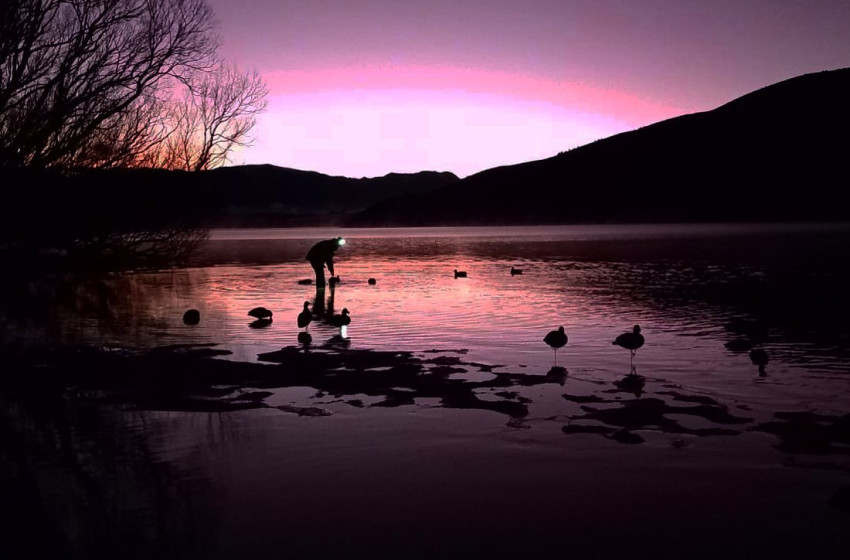
Above right: Not long to go before the sun rises over the decoys. Photo: Melissa Laucht
Putting in the hard yards will harvest rewards
Otago hunters should expect an average season, but that’s still surprisingly good, given the summer drought.
We’ll need good hunting conditions to nail a decent harvest this year. Hunters prepared to put in the time and effort will harvest the most rewards.
Most of Otago experienced reasonable rainfall in spring, which lends well for mallard breeding.
Once summer got underway, the region dried off and descended quickly into drought conditions in parts.
Although this happened after the main breeding season, some late broods may have been affected.
Many ponds throughout the district will have benefited from the recent rain, which is a relief for Opening Day.
Southern hunting prospects are good compared with northern North Island, where botulism has wreaked havoc on duck numbers.
Show a bit of gratitude ─ invite a mate down south to share what hunting we have.
Mallard population counts
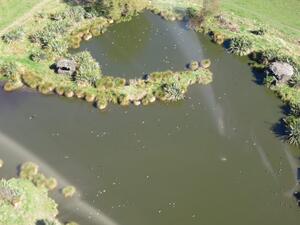 This year’s mallard count is close to the pre-2022 average. Photo: Jayde Couper
This year’s mallard count is close to the pre-2022 average. Photo: Jayde Couper
Just under 5,000 mallards were recorded in this year’s annual Otago trend count ─ lower than the 5,780 average of previous surveys.
Otago Fish & Game conducted the count on April 15. Mallard were counted from a helicopter across 46 ponds, seven 10km river reaches, and ten 10km cross-country transects.
The decrease was seen across the region, but the general trend across time remains positive.
It is important to note last year’s mallard count was exceptionally high.
If that count is removed from the calculations, this year's count is relatively close to the pre-2022 average for each stratum (ponds, rivers and cross-country transects) and the overall total count.
The 2022 survey was also conducted during a drought, concentrating birds on the river transects. (See Table 1 below)
South Otago experienced prolonged dry weather before this year’s mallard monitoring survey.
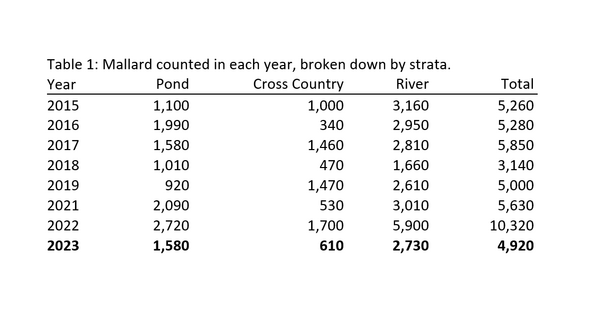
The dry spell had a noticeable effect on the ponds surveyed, as several were dry.
Although the proportion of dry ponds was not significantly higher than in previous surveys, some ponds that were dry this year had previously held high numbers of mallards.
This suggests the dry conditions may have affected the distribution and concentration of mallards in the region.
Further analysis will be required to determine the full impact of the dry weather on the mallard population.
Another factor in this year's survey was the high and dirty conditions of the Taieri and Pomahaka rivers due to heavy rainfall in the few days before the survey.
Mallards may have moved onto flooded paddocks during the survey, affecting the count.
Central Otago
Duck numbers are traditionally great in this area, well known as the heart of waterfowl hunting in the region.
Previous ranging by Fish & Game in this area has found a lot of ponds not hunted over opening weekend.
There are lots of hunting opportunities here, and a polite visit to a farmhouse can often secure access to ponds, drains and paddocks.
Southern Lakes

Paradise shelduck monitoring has showed a slight decline, but numbers are still stable overall. Photo: David Priest
Good numbers of mallards have been seen at the head of Lake Dunstan, near Glenorchy, and on Lake Hāwea.
Paradise shelduck numbers in Wānaka and Hāwea have been fairly stable during recent trend counts.
Large numbers of Canada geese have been roosting at the head of Lake Dunstan and some of the bays in Wānaka too, so hunters using a mixed decoy spread may be able to lure in these cunning birds as a bonus with their game bird harvest.
Although steel shot is not required for harvesting Canadas, it is an offence to have lead shot when hunting ducks.
Hunters wishing to target both will need to have only steel shot in their possession when hunting these areas.
South Otago
Mallard production in this region is generally more consistent, although like other parts of Otago, it became very dry over the summer.
On Opening Day, hunting will most likely be dependent on the weather and how many hunters are near where you are positioned.
If you haven’t already found a spot, your best chance for Opening Day may well be on a backwater on the Taieri or another South Otago stream.
If hunting adjacent to private land, be sure to notify the landowner before hunting.
Before Opening Day, if there is a significant amount of rain, then setting up and targeting flooded paddocks from layout blinds can be highly effective.
Use full-body decoys in this situation; however, if you don’t have any, then placing floating decoys in the puddles can be just as effective.
Make sure you dig the keel into the mud in shallow water so the decoys don’t rest on their sides.
Alternatively, using pieces of wire can stand the decoys up to provide a better presentation.
Shoveler regulation change
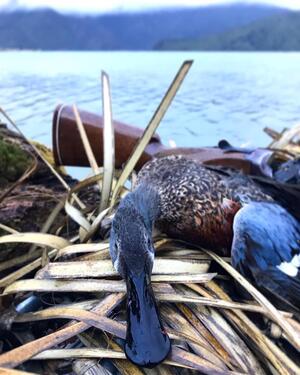
A bag limit reduction and a drake only limit has been set to help shoveler populations recover. Photo: Ben Sowry
Hunters are reminded to double-check the regulation booklet each season, as regulations may change from year to year.
One such regulation change this season is the reduced shoveler bag limit.
Last year’s trend count showed a worrying decline in shoveler numbers, and the Otago Fish & Game Council has decided to reduce the limit from two birds down to one DRAKE per day.
Shoveler, like most dabbling ducks, tend to have a ‘drake heavy’ population.
This is possible due to the vulnerability of hens to predators when nesting.
By harvesting only drakes, the main breeding population will be largely unaffected and will hopefully see a bounce back of these taonga native birds in future seasons.
Decoy setting
Last season, Otago Fish & Game staff created a video for setting decoys.
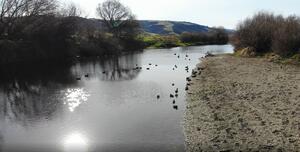
Check out this Fish & Game YouTube video on setting decoys.
When ranging, staff have seen some people making some easily correctable mistakes with their decoy spreads, so created this to help hunters to harvest some more birds for the table.
To see the video, click this link: https://youtu.be/WZd4_AYQ58A
Final season for .410 lead shot
The 2023-24 season will be the last chance to use lead shot in .410 shotguns for waterfowl hunting.
Use of lead shot within 200 metres of water has been banned from all other shotguns since 2021.
Waterfowl hunters must use non-toxic shot like steel, tungsten and bismuth ─ except for .410s.
The upcoming regulation change follows a decision by the Minister of Conservation to remove this final exemption for lead, which is a toxin.
It will mark a big change for many hunting families where the .410 has long been considered an entry-level shotgun for youth learning to hunt.
Stay safe, stay legal
It’s essential to the image and reputation of the sport that hunters abide by the regulations and hunt safely.
Check you have in your possession legal ammunition, correctly identify bird species, respect daily bag limits and, most importantly, handle firearms safely and responsibly.
Extra care and attention must be exercised around novice and junior hunters, especially those handling a firearm under direct supervision.
Wishing you an enjoyable and productive 2023 hunting season.
Ben Sowry, Otago Fish & Game